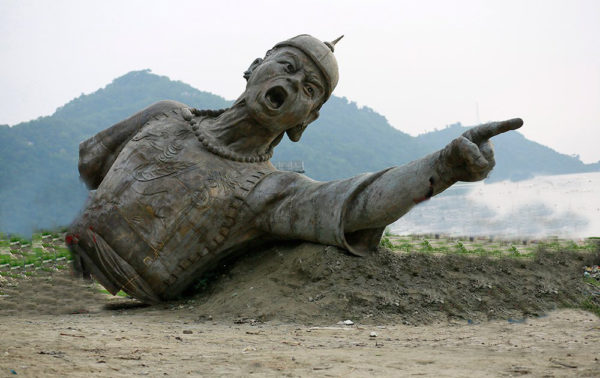One of the most significant examples of the neglect of the North-Eastern part of India is the near exclusion of legendary figures of the region from the national historical narrative. The nation would have been even more poorly served had the fascinating exploits of the heroic 17th century Ahom general Lachit Borphukan been confined to a mere footnote in history.
Corrective measures came rather late in the day when, responding to the significant initiatives of a local organization, the Chief of the Army Staff, V P Malik, instituted the Lachit Barphukan prize in 1999, awarded to the Best Cadet of the National Defence Academy during the passing out parade.
The exploits of Lachit apart from constituting an important chapter in the annals of history would find pride of place as an important manual outlining military strategies in the Indian subcontinent. For the uninitiated Lachit Borphukan was the commander-in-chief of King Chakradhwaj SIngha of the Ahom Dynasty in the 17th century. It was during his reign that the Mughal army of Aurangzeb, as part of its expansionist drive, laid siege to Assam and succeeded in capturing Guwahati. Lachit Borphukan was the man chosen by King Chakradhwaj Singha to liberate Assam from the yoke of the Mughals.
The battle brought to the fore all the qualities of Lachit; as an astute military strategist, a crafty and innovative general – well-versed in the art of psychological warfare of the times and also a brave and inspirational leader. Given the fact that they were up against an overwhelmingly resourceful and formidable Mughal adversary with superior military capability, the versatility of Lachit was put to its true test.
Aurangzeb’s eastern campaign was led by the Kachwaha Raja, Ram Singh, who commanded 30,000 infantry, 15,000 archers, 18,000 Turkish cavalry, 5,000 gunners and over 1000 cannons besides a large flotilla of boats. The mammoth army got the respect it deserved as the Ahom warrior refused to be drawn into a game if one-upmanship and set the terms of engagement by playing to his strengths. He drew out the enemy from their chosen battleground, the plains to the hills, where the guerilla tactics of the Ahoms would be better utilized. The cunning of the Mughals met their match in the shrewd Lachit as he used his extensive spy network to keep track of the enemy movements thus staying ahead of the game.
This also helped him thwart the devious attempts of the enemy to discredit him in front of his king Chakradhwaj Singha and also helped him indulge in deceptive diplomatic maneuvering to buy time. The way the defence was designed by this superb strategist convinced the Mughals that the absence of Lachit from the equation would tilt the advantage decisively in their favour. Thanks to the support of an able prime minister who managed to convince a credulous king about Lachit’s innocence the possible crisis was averted. But probably the clinching factor in this extensive and well-thought out campaign was the terrain and the weather.
To the Mughal forces hitherto more at home in dry, arid and open terrain, the marshy swampy territory inhibited their movements; the hills made them vulnerable to surprise enemy attacks – dagga judha (guerilla warfare). The cold wet weather further added to their misery and made them extremely lethargic and increased their susceptibility to the energetic movements of their enemy. Restricted from the unhindered and fluent mobility of their dynamic cavalry that had helped them overrun their enemy numerous times in the past, the Mughal forces were caged tigers bursting for that opportunity to bare their claws.
Lachit Borphukan fortified Gauhati to such an extent that the Mughals had no option but to opt for the nautical route to realize their ambitions of conquering the region. This situation was cleverly contrived by the Ahoms as they realized that the poor naval warfare skills of the enemy would leave them exposed to the tactics of the Ahoms. The defence stategy of the Ahoms had a ruthlessness about it that brooked no lapses. Realizing that any chink in the armor would leave them at the mercy of a savagely powerful enemy who had marched relentlessly in their desire to retain absolute control of the Indian subcontinent, they displayed a severe and fierce front in the defence of their territory.
The commander-in-chief Lachit himself set the example when he beheaded his own maternal uncle when he thought him lax in the execution of a crucial fortification to bolster the defence of his land. But none as compelling as when the ailing Lachit, laid low by a debilitating fever during the battle of Saraighat, dragged himself onto a warboat to invoke the spirit of valour of his retreating forces, and inspired them to victory.
Aritcle By : Shantanu Sharma






Leave a reply